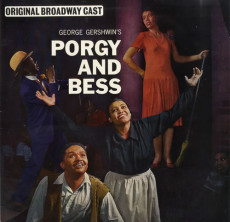
From Broadway To 52nd Street
Porgy & Bess took the stage at the Alvin Theatre on October 10, 1935, running for only 124 performances. Written by Dubose Hayward with music composed by the Gershwins, and starred Todd Duncan, Anne Wiggins Brown, Warren Coleman and John W. Bubbles. The initial production was treated as such a major event that the larger dailies sent both their drama and music critics to cover the opening. Though not a commercial success from the ashes rose a score that has been performed by countless musicians but a few songs separated themselves to become individual classics and jazz standards such as Summertime, I Loves You Porgy, My Man’s Gone Now, It Ain’t Necessarily So, and There’s A Boat That Leaving Soon.
The Story: Set in Charleston, South Carolina in the tenements of Catfish Row, this opera follows the lives of Porgy, a crippled beggar, his love interest – the seductive Bess, her abusive man Crown and the slinky cocaine dealer Sportin’ Life who woos her away to New York City. The star-crossed lovers, Porgy and Bess, are doomed to struggle but triumph with dreams of life outside their community.
Broadway History: But while New Yorkers were enjoying the distraction of Broadway, the country remained engulfed in The Great Depression and in year five of the Dust Bowl’s “Dirty Thirties” in which the year hosted on April 14th the worst “black blizzard” causing such extensive soil erosion that would come to be known as Black Sunday. Some 5.3 million acres of the Southern Plains were damaged and the dust would blow all the way to east coast.
However, while part of the country was experiencing disaster Ella Fitzgerald was winning a one week performance at the Harlem Opera House, the “Swing Era” was in its infancy, Benny Goodman has secured a recording contract with Victor Records and snagged a spot on the Let’s Dance radio program and a live broadcast of his Palomar Ballroom performance in Los Angeles garnered him national following and a first-ever jazz concert at Carnegie Hall in New York. Tommy Dorsey would follow with a million-seller record with Irving Berlin’s Marie along with Artie Shaw’s version of Cole Porter’s Begin The Beguine.
Sponsored By
www.whatissuitetabu.com
More Posts: broadway
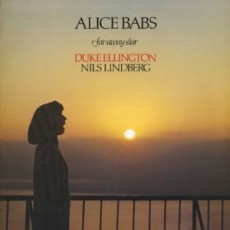
Daily Dose Of Jazz…
Alice Babs was born Hildur Alice Nilsson on January 26, 1924 in Kalmar, Sweden. The singer and actress has worked in a wide number of genres including Swedish folklore, Elizabethan songs and opera however, she is best known internationally as a jazz singer.
Alice made her recording debut in 1939 at the age of 15, her yodeling making her initially popular but it was her acting breakthrough in “Swing It, Teacher!” in 1940 and subsequent hit song that brought her more acclaim for her appealing voice and lightly swinging style. She appeared in more than a dozen Swedish language films and despite playing the well- behaved, good-hearted and cheerful girl; the youth culture made Alice its icon causing outrage among members of the older generation. A vicar called the Alice Babs cult the “foot and mouth disease to cultural life”.
In 1958, she was the first artist to represent Sweden in the Eurovision Song Contest finishing in 4th place. The same year, she formed “Swe-Danes”, touring the U.S. before dissolving in 1961. Fortune smiled and Alice began a long and productive collaboration with Duke Ellington in 1963, performing among other works his 2nd and 3rd Sacred Concerts. Because her voice had a range of more than three octaves, Duke Ellington said that when she did not sing the parts that he wrote for her, he had to use three different singers.
Ellington once remarked to the visitors of an Alice Babs recording session: “This voice, ladies and gentlemen, embodies all the warmth, joy of life, rhythm and tragedy that, for me, is the innermost secret of jazz”. She passed away from complications of Alzheimer’s disease on February 11, 2014 at age 90 in Stockholm, Sweden.
More Posts: vocal
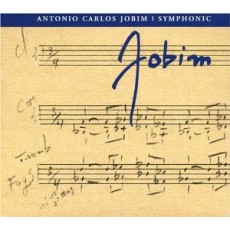
Daily Dose Of Jazz…
It has been said that Antonio Carlos Jobim was the George Gershwin of Brazil, and there is a solid ring of truth in that, for both contributed large bodies of songs to the jazz repertoire, both expanded their reach into the concert hall, and both tend to symbolize their countries in the eyes of the rest of the world.
Born Antônio Carlos Brasileiro de Almeida Jobim on January 25, 1927 in Tijuca neighborhood of Rio de Janiero studied to become an architect but the lure of music was too strong being firmly rooted in the music of Pixinguinha, who began modern Brazilian music in the 1930’s. By twenty he started playing piano in nightclubs and working recording sessions. He cut his first record in 1954 leader his group Tom and His Band, backing singer Bill Farr.
Tom, a nickname he affectionately carried throughout his life, was firmly planted in jazz having been impacted by Gerry Mulligan, Chet Baker, Barney Kessel and other West Coast musicians. He also gleaned influence upon his harmonies from Claude Debussy and Samba gave his music an exotic rhythmic underpinning. His piano is simple and melodic, his guitar gentle and his singing hauntingly emotional. Among his many themes his lyrics talked of love, political repression, betrayal, the natural beauties of Brazil and his home city of Rio.
Jobim first found fame in 1956 when he teamed with poet and diplomat Vinicius de Moraes to score part of the play Orfeo do Carnival, which would later gain them worldwide acclaim at Cannes when Black Orpheus debut in 1959.
In 1958, an unknown Brazilian singer João Gilberto recorded some of Jobim’s songs, which effectively launched bossa nova. Yet, Jobim’s breakthrough outside Brazil occurred in 1962 when Stan Getz and Charlie Byrd scored a surprise hit with his tune “Desafinado” – and later Getz teamed with Joao Gilberto and his wife Astrud resulting in Getz/Gilberto in 1963 and Getz/Gilberto 2 in 1964. The ’63 album became one of the best selling jazz albums of all time and grabbed 4 Grammy Awards. With their gracefully urbane, sensuously aching melodies and harmonies, Jobim’s songs gave jazz musicians in the 1960s a quiet, strikingly original alternative to their traditional Tin Pan Alley source.
Grammy award winning songwriter, composer, arranger, singer, pianist and guitarist while driving home after finishing recording for his next album Tom Jobim, collapsed and passed away of heart failure in New York City on December 8, 1994.
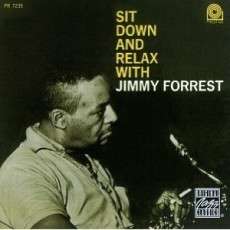
Daily Dose Of Jazz…
One of the many jazz musicians to come out of St. Louis, Missouri was Jimmy Robert Forrest Jr., born January 24, 1920. Working with pianist Eddie Johnson, Fate Marable and the Jeter-Pillars Orchestra while in high school, he went on the road with Dan Albert in 1938 and then the Jay McShann Orchestra from 1940 to 1942.
Forrest moved to New York and played with Andy Kirk and Duke Ellington before returning to St. Louis. His recording of “Night Train” with it’s hook and classic tenor solo reached the #1 spot on the Billboard R&B chart in 1952 and stayed for seven weeks. Gathering greater attention Jimmy recorded a series of jazz influenced R&B singles for United Records including two other hits “Hey Mrs. Jones” and “Bolo Blues”.
“Night Train” became the theme song for a nightly rhythm and blues program of the same name hosted by William A. “Rascal” McCaskill on KREL-AM in Houston market from 1954-1957 that virtually introduced white teenagers to what was called race music.
During the fifties he led his own combos and played with Miles Davis but Jimmy Forrest’s most important associations were with Harry “Sweets” Edison from ’58-’63, the Count Basie Orchestra from ’72-’77 and Al Grey with whom he co-led a quintet until his death.
Tenor saxophonist Jimmy Forrest, bandleader and sideman, died on August 26, 1980 in Grand Rapids, Michigan.
More Posts: saxophone
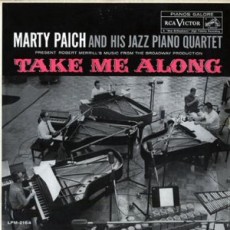
Daily Dose Of Jazz…
Marty Paich was born Martin Louis Paich on January 23, 1925 in Oakland, California. He started his music career taking lessons on the accordion followed by the piano and by 10 he formed his first of several bands and by 12 was playing regularly at weddings and similar social events. He attended a series of professional schools, served in the Army Air Corps during WWII leading various bands and orchestras until his discharge. Marty went back to school studying composition and graduating magnum cum laude in 1951 from the Los Angeles Conservatory.
Paich had an extraordinary ear for style and an eclectic taste. His early work included arranging and playing the score for Disney’s Lady and The Tramp, accompanist for Peggy Lee, playing piano for Shorty Roger’s Giants and touring with Dorothy Dandridge.
During the 1950s, Paich was active in West Coast jazz performance while also working intensively in the studios. He not only played on, but arranged and produced, numerous West Coast jazz recordings, including albums by Ray Brown, Ella Fitzgerald, Terry Gibbs, Shelly Manne, Anita O’Day, Dave Pell, Buddy Rich but it was his association with Mel Torme and their work with the Marty Paich Dektette, albeit difficult at times, was what many jazz critics consider to be the high point of their respective careers.
The 60’s moved him to the studios and television working for Andy Williams, Al Hirt, Dinah Shore, Glen Campbell, Sonny & Cher, the Smothers Brothers and winning an Emmy for Ironside.
In a career which spanned half a century, he worked as a pianist, composer, arranger, producer, music director and conductor for such artists as Frank Sinatra, Sammy Davis Jr., Sarah Vaughan, Stan Kenton, Jack Jones, Art Pepper, Stan Getz, Barbra Streisand, Ray Charles, Aretha Franklin, Linda Ronstadt, and Michael Jackson and a hundred others. Marty Paich passed away on August 12, 1995, aged 70 from colon cancer, at his home in Santa Ynez, California.






